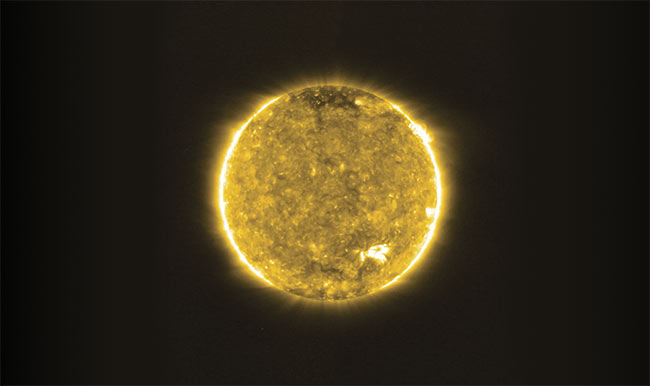Two solar imaging missions are bringing photonic systems closer to the sun than ever before to reveal how we can better predict periods of stormy space weather.
MARIE FREEBODY, CONTRIBUTING EDITOR
 Imagine trying to take pictures or make optical measurements on a cloudless day beneath the blistering onslaught of 13 suns. This is the equivalent reality for the European Space Agency’s (ESA’s) Solar Orbiter and NASA’s Parker Solar Probe (PSP), the latter of which is currently operating in temperatures of almost 1640 K in the inhospitable environment around the sun.
“Probably the single important aspect of both of these missions is that they are going to regions of space that have never been explored and are already giving new observations that are changing or explaining our previous concepts of how the sun works,” said Russell A. Howard, head of the Flight Projects Section at the Solar and Heliospheric Physics Branch of the U.S. Naval Research Laboratory (NRL) in Washington, D.C.
The challenge for teams at ESA and NASA was to design these spacecraft systems to operate without melting or warping in such intense heat — not to mention the need to protect the systems from the barrage of dust particles that orbit the sun and the plasma particles that make up the solar wind. The teams’ solutions pull together several innovative technologies from previous missions and draw upon advancements from other disciplines to develop new materials, coatings, and processes.
Imagine trying to take pictures or make optical measurements on a cloudless day beneath the blistering onslaught of 13 suns. This is the equivalent reality for the European Space Agency’s (ESA’s) Solar Orbiter and NASA’s Parker Solar Probe (PSP), the latter of which is currently operating in temperatures of almost 1640 K in the inhospitable environment around the sun.
“Probably the single important aspect of both of these missions is that they are going to regions of space that have never been explored and are already giving new observations that are changing or explaining our previous concepts of how the sun works,” said Russell A. Howard, head of the Flight Projects Section at the Solar and Heliospheric Physics Branch of the U.S. Naval Research Laboratory (NRL) in Washington, D.C.
The challenge for teams at ESA and NASA was to design these spacecraft systems to operate without melting or warping in such intense heat — not to mention the need to protect the systems from the barrage of dust particles that orbit the sun and the plasma particles that make up the solar wind. The teams’ solutions pull together several innovative technologies from previous missions and draw upon advancements from other disciplines to develop new materials, coatings, and processes.
Member Exclusive: To read the complete article, please Login or Register